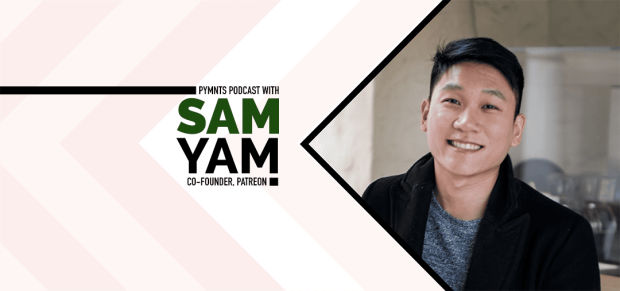The Digital Platform That Wants To Be A-Star-Is-Born Maker

There are still countless books to be written about whether the digital age — the technology, the processes, the seemingly endless retail and service choices, the tracking of personal data, the ability of nearly everyone to start a business or land a gig — is more about tyranny or democracy.
That’s beyond our ken here at PYMNTS.
But one thing is very clear — the digital era has in some ways made it easier to be an artist or other type of creator. That’s because the digital era is, in some ways, is making much, much easier for those creators to connect with specific audiences and earn livings from the monetary generosity of those crowdsourcing fans.
The digital impact on art, and art-related commerce and payments, served as the subject of a fresh PYMNTS discussion that featured Karen Webster and Sam Yam, co-founder and chief technology officer of Patreon, the online platform that enables fans to give small (or big) financial payments to creators of their choice. “The whole journey to developing a creative career is still ambiguous,” he told Webster, but at least with digital, that journey can at least seem democratic, in that all fans can directly participate in an artist’s success.
New Funding
The PYMNTS discussion came at a big time for Patreon. The company has just announced a $60 million Series D funding round, with that fresh capital earmarked to such tasks as global expansion and helping creators build their brands via such efforts as limited-edition merchandise sales via the platform.
Indeed, in the six years it’s been in business, Patreon has attracted more than a fair amount of interest. It has a user base of more than three million, and the firm is on course to surpass $1 billion in total contributions paid out to creators by the end of this year. That growth has been exponential, too, since over half of that billion will be paid out in 2019 alone.
That billion donated is impressive, given that Patreon donations are generally pretty small. The average patron gives $12 per month to the artist or artists they’re passionate about, according to the company’s internal figures — and monthly donations of $10, $5 or even $1 per patron are fairly common. And while there are a few runaway success stories of people bringing in tens of thousands of dollars a month through the platform, the average creator brings in more modest sums, usually in the hundreds of dollars.
Most people to pay creators tend to stick with just one, Yam told Webster. “But over half the revenue going to creators is being given out by patrons who support two or more creators,” he said. Could that lead to something akin to a membership bundle package to which audience members could subscribe? “We don’t see that in the foreseeable future,” he said, “as it gets between the creators and their subscribers.”
Merchandise Push
What Patreon is more focused on that some membership-bundled offering is helping creators to sell unique or limited-time merchandise via the Patreon platform, he said. “We have found over time that creators wanted as much sustainable funding as possible over the long term,” he said. “And they wanted a set of tools that allowed them to enrich the relationships they had with their best fans.”
Such merchandise can help creators build out their brands — a few lucky ones might even build something that can scale globally and become its own thing beyond Patreon. “That’s something we are investing heavily in,” Yam said.
The content on Patreon is pretty varied, as you can imagine, but some general trends stick out at this point in 2019. “Podcasts are a very large segment,” Yam said, crediting the true-crime wave within the podcast community as helping to spark that. “The gaming community is also very large. We are seeing a lot of new mediums we really didn’t think of.”
And the interest seems sustainable in such platforms, at least according to how Yam told it Webster. So many children, he said, are enamored not so much about being engineers or doctors, but something more creative. “They want to be YouTubers,” he said. Children often grow up and lose such dreams — and some don’t — but no matter what, it seems that digital technology can reduce some friction and anxiety from the hard, often lonely work of being an artist or creator.
